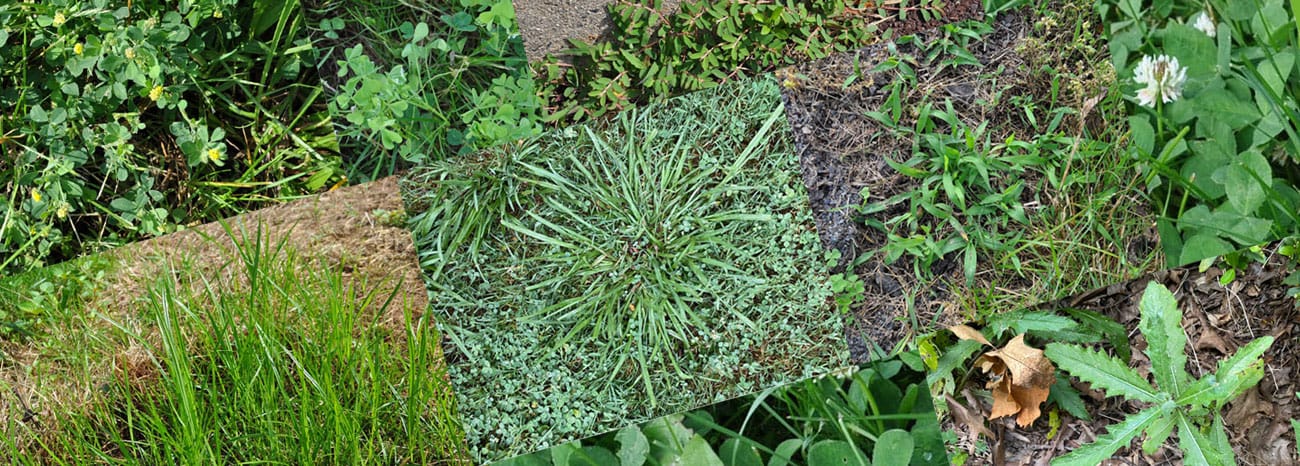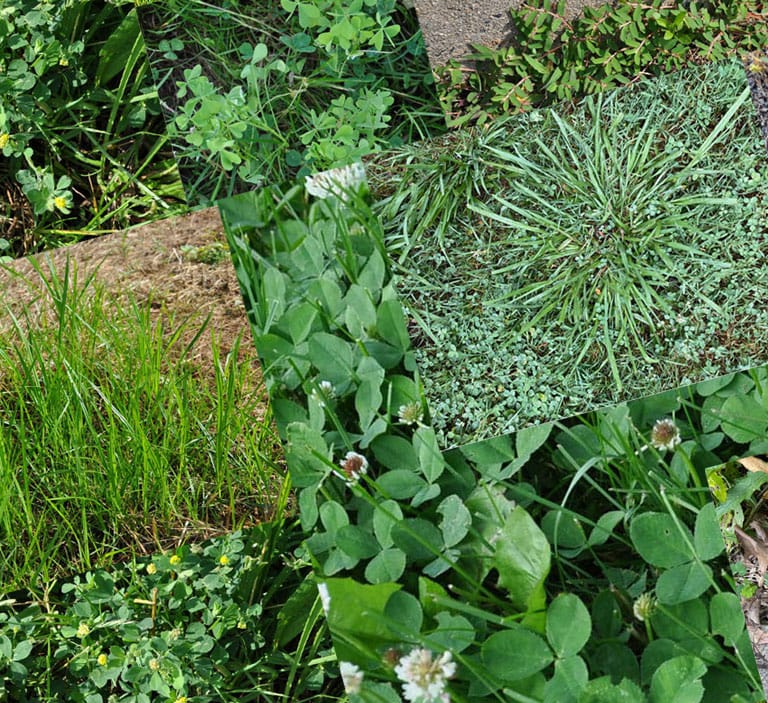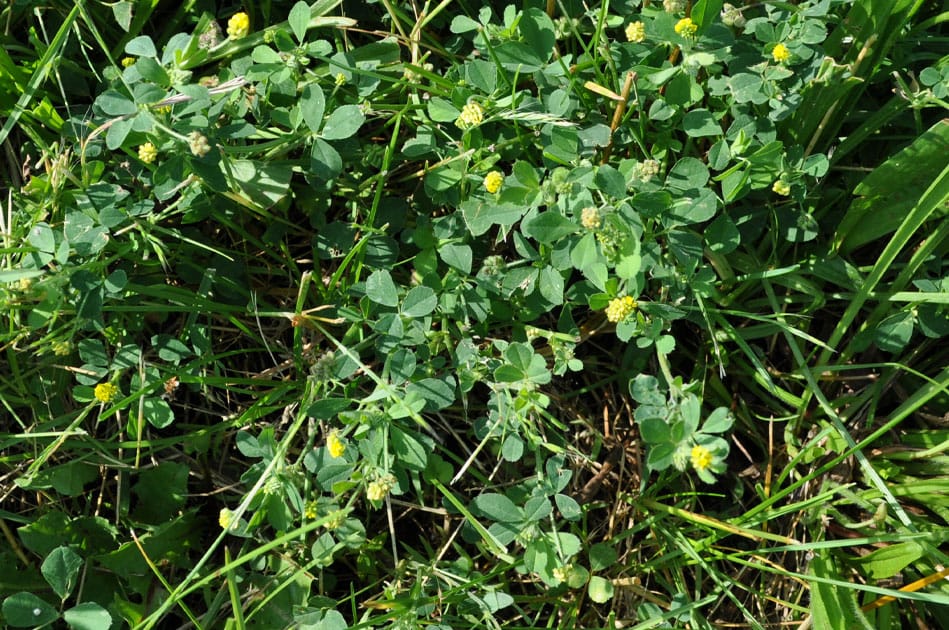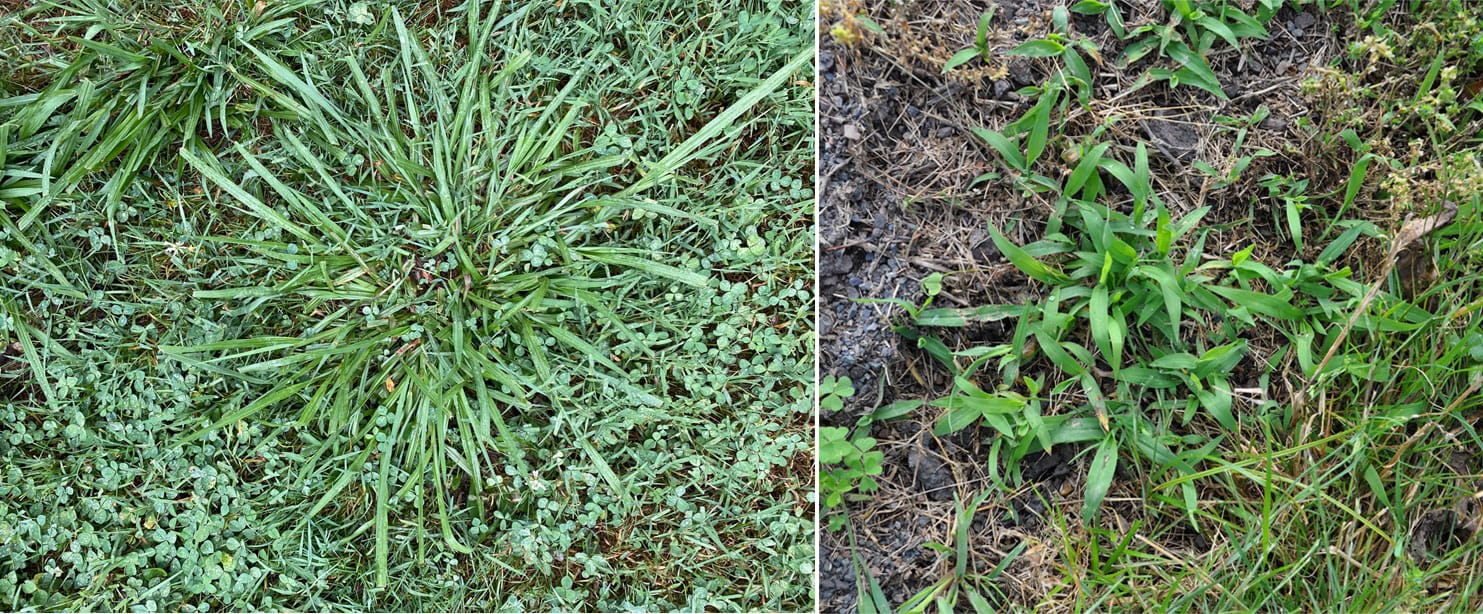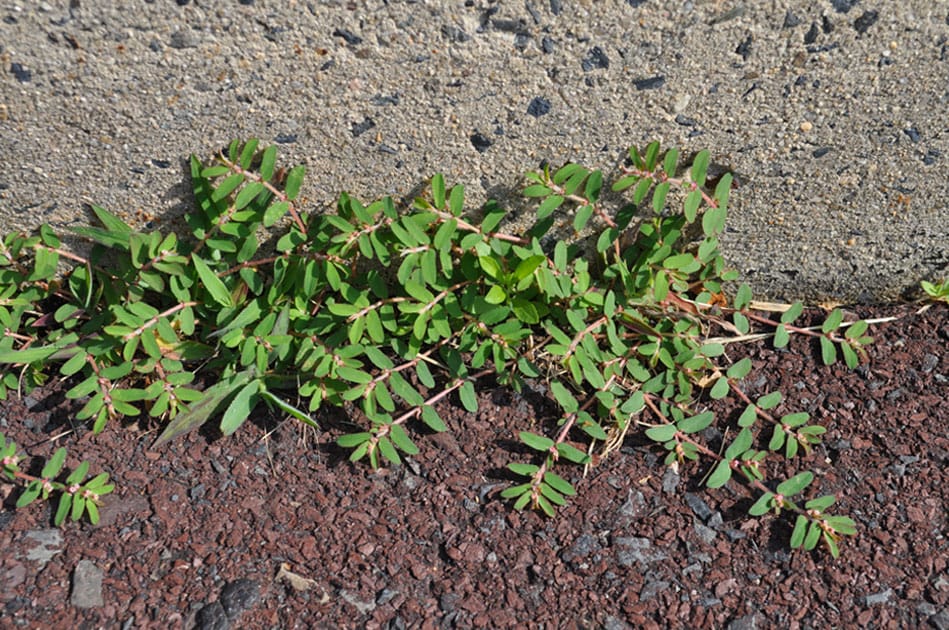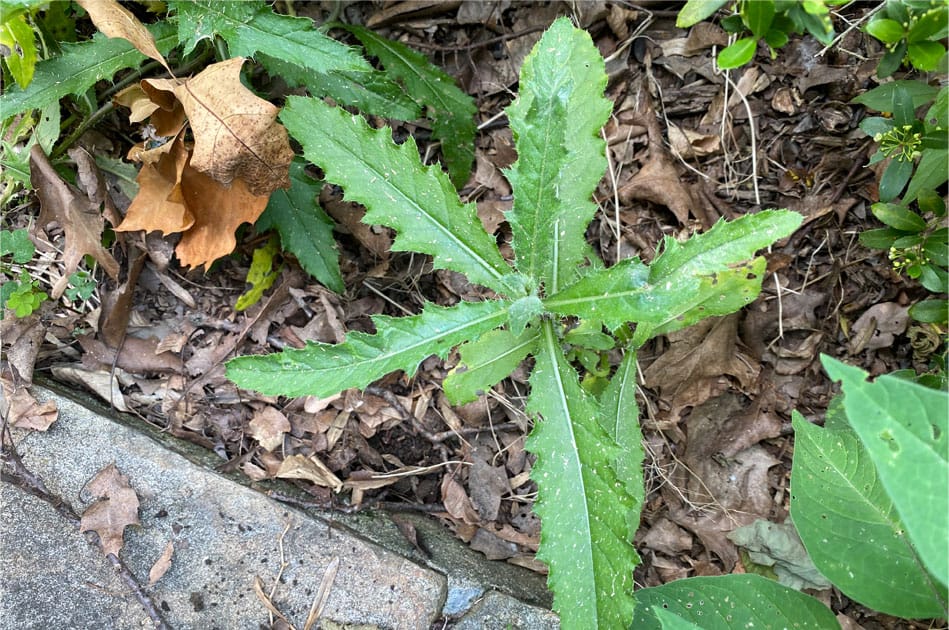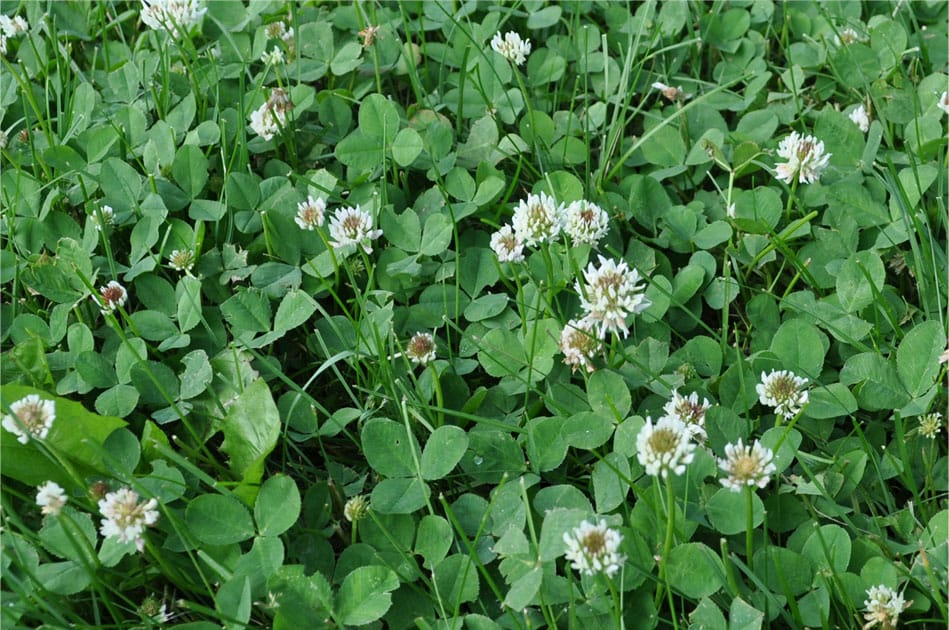Weeds. Unsightly and persistent, by the time the warm seasons of spring and early summer arrive it seems as though they’ve already overtaken your lawn. Before you reach for the weed killer, it’s important to know the types of weeds in your lawn and the best way to deal with them.
In this particular guide we’ll cover the broadleaf weeds commonly found in Pennsylvania. These weeds are easier to identify because unlike grassy weeds, which start out as a seedling with a single leaf and grow into plants resembling blades of grass, broadleaf weeds start as seedlings with two leaves and grow into plants with wide leaves growing out from a stem base.
Another distinctive characteristic of broadleaf weeds is their root system. They grow from a network of fibrous roots, which vary from a single taproot to a system of thinner roots. Some types of broadleaf weeds have a combination of the two.
Broadleaf weeds are found in lawns, gardens, anywhere greenery can pop up. They emerge throughout the year, with varieties ranging from annuals (summer annuals and winter annuals) to biennials and perennials. The variety of broadleaf weed dictates not only their root system but also their appearance.
Some have single flowers while others grow clusters of blooms. There are broadleaf weeds that grow close to the ground and others that grow tall, some with stems that are square and others, round.
Pennsylvania is home to many types of broadleaf weeds. Identifying the broadleaf weeds in your lawn is the first step to knowing how to control them and perhaps even prevent them from growing in the first place.
Broadleaf Weed Lifecycles
The lifecycle of the broadleaf weed will play a part in how you deal with its control and removal.
Annuals
While annuals produce a large volume of weed seeds, these are usually the easiest type of weed to control thanks to their simple root system.
Winter annuals germinate in fall or winter, living through the winter and then blooming in winter or spring. Summer annuals experience their entire life cycles within the warm seasons of the year. Whether winter or summer, each type of annual only lasts for a 12-month period.
Biennials
A biennial is a flower-producing plant with a life cycle that takes two years to complete, with the plants lasting up to five years. In the first year, the root system is established and stems and leaves grow. The plant goes dormant for the winter and in spring it yields flowers and seeds.
Perennials
Perennial weeds return season after season. They can germinate from seeds as well as through their root structure, which can lead to weed growth from underground or from the surface of your lawn.
Broadleaf Weeds Found in Pennsylvania
Here is a rundown of the broadleaf weeds you will find growing in Pennsylvania, maybe even in your lawn. We’re listing them by lifecycle to help you create your control plan.
Winter Annuals
Hairy Bittercress: Hairy Bittercress appears in a basal rosette, meaning its pairs of leaves all emerge from the stem. It also has blooms of small white flowers. Hairy Bittercress appears in early spring and spreads rapidly. Its long taproot makes it difficult to control by hand-pulling.
Henbit (Dead Nettle): Henbit has its name thanks to its status as a favorite snack for grazing chickens. Identified by its purple blooms, henbit is actually a member of the mint family. Its leaves are scallop-edged with blooms of purple flowers. It thrives in excessively moist soil and shaded areas. Hand-pulling can be successful if done while the plant is young and if the entire fibrous root system is removed. Otherwise, it’s better to use other control measures.
Summer Annuals
Black Medic: Black Medic grows best in sunny spaces with dry soil. Its presence can be an indicator that the soil is low in nitrogen. It is in the legume family, with three leaflets and small yellow flowers.
Black Medic is best controlled by maintaining a dense, healthy turf so that its seeds cannot take hold. Once it is present, hand-pulling can be effective to a point but chemical control is best.
Crabgrass: Crabgrass is a broadleaf weed that grows low to the ground with many spiky leaves. It thrives in hot, dry soil. Crabgrass spreads only by seed, so a pre-emergent control treatment is recommended. A lawn care regimen of fertilization and mowing the grass to a healthy height of 3”-4” will encourage growth of dense, healthy grass, making it less likely for crabgrass to take hold.
Prostrate Knotweed: Prostrate Knotweed leaves are oblong in shape and the plant grows low to the ground in a branching pattern, creating a matting effect. It grows quickly and easily overtakes the areas it inhabits. The presence of Prostrate Knotweed is usually an indication of compacted soil. In addition to chemical control methods, a lawn aeration and seeding protocol is suggested as a preventative measure.
Spotted Spurge: Spotted Surge is another low-growing broadleaf weed that is often mistaken for Prostrate Knotweed, except that Spotted Surge flowers with white and pink blooms. Spotted Surge has much the same effect as its doppelganger, taking over barren areas of the lawn as well as in flower beds.
Hand-pulling can be effective but only if you remove the new growth early and remove the entire root system. In lawns, maintaining dense growth of healthy grass will help deter the growth of Spotted Spurge but if it presents fully then chemical control measures are necessary.
Biennials
Black Medic: See above.
Yellow Rocket: Yellow Rocket grows in a basal rosette with golden yellow flowers. With this appearance it can be misidentified as Wild Mustard, but Wild Mustard flowers are smaller and have a deeper golden yellow color. Due to its long taproot, hand-pulling is not effective for long-term control. Preemergent and Postemergent control is recommended.
Perennials
Nutsedge: Nutsedge is sometimes called Nutgrass because its leaves can look like blades of grass. That’s where the comparison to healthy grass ends. Nutsedge has a triangular stem with a root system that can extend to as deep as four feet. The nutsedge root system multiplies underground via rhizomes which emerge as new plants.
It favors compacted soil and areas with poor drainage. Maintaining a healthy lawn can help deter Nutsedge but if you are already seeing it in your lawn and landscape, it’s time for postemergence chemical control measures.
Oxalis: Yes, Oxalis, the white flowering plant you often see for sale in markets around St. Patrick’s Day or as shamrock-like plants in your lawn, is a broadleaf weed. You can control Oxalis by hand-pulling but it may not be entirely effective, since the plant spreads both by seed and via rhizomes from underground.
Thistle: In Scotland, the Thistle is the national emblem, with their tall thorny stems leading to a purple bloom. They are indeed a tenacious plant. Their root system is well-established, making hand-pulling a challenge and chemical control a more effective option.
White Clover: White Clover is a low-to-the-ground, flowering weed. Still, it is a weed that can take a toll on your lawn. Given White Clover’s ground cover growth pattern, hand-pulling isn’t a realistic control option. Chemical controls are far more effective. A lawn fertilization regimen can also help prevent its growth.
If you care to – pun alert – get into the weeds for even more details, the Penn State University’s College of Agricultural Sciences Department of Plant Science has a comprehensive resource.
Preventing and Controlling Broadleaf Weeds
Now that you know the types of broadleaf weeds and their lifecycles, you’re better equipped for weed control, preventing their growth or removing them entirely.
One way to discourage growth of broadleaf weeds is to make your lawn less hospitable. The less shade your lawn receives, the less likely broadleaf weeds will inhabit the area. You should also consider lawn aeration and seeding. This process will thicken your healthy grass leaving less space for broadleaf weeds to settle.
Other lawn care tactics that prevent broadleaf weed growth include:
- Regular fertilization of your lawn
- Mowing your lawn at the appropriate height. Keeping your grass at a height of 3”-4” is best.
- Lawn watering: keeping your lawn hydrated without over or under watering.
If broadleaf weeds have already made a home in your lawn, here are the recommended methods to control these invasive plants:
Pull the Weeds by Hand
Hand-pulling broadleaf weeds works best with annual varieties, since they have the least complex root structure. Removing these weeds early also prevents them from spreading. When you hand-pull perennial and biennial broadleaf weeds it’s far more difficult to know that you’ve pulled all of the roots.
Shade Them
This method may not work for everyone, since the treatment area is likely areas of your lawn or in flower beds with existing plants. If you would like to try this, all you have to do is cover the desired area with a tarp or boards – anything that will prevent sunlight and water from reaching the weeds.
Control Products
Using control products is a more efficient and effective way to prevent or remove broadleaf weeds. Whether you choose preemergence or postemergence products depends on the lifecycle and growth habits of the broadleaf weed. You will also need to choose between a selective or non-selective herbicide.
Preemergence Herbicides
Control broadleaf weeds before they have the chance to sprout. If you have areas in your lawn or landscaping where you know that broadleaf weeds sprout up consistently, use a preemergence herbicide before you see growth, to control the seeds, or just as the broadleaf weed is surfacing in the soil.
Postemergence Herbicides
This type of herbicide is used to control existing broadleaf weeds. Some postemergence herbicides are contact, controlling the weeds on their surface. Others are systemic, meaning that once applied they move throughout the weed’s system to eventually control the entire weed.
Selective and Non-Selective Herbicides
A selective herbicide is just that, selective. It works only on certain plant life which allows you to control the weeds without harming your other vegetation.
Non-selective herbicides control a wide range of plant life, meaning this type of herbicide will control the weeds but could also damage desirable grasses, plants and flowers.
Whatever you choose, keep in mind that annual weeds are most easily controlled. Biennial and perennial weeds may return later in the season, requiring additional treatment.
Next Steps – Let Us Help
Now that you know how to identify and control the broadleaf weeds in your lawn and landscape, it’s time to make a plan. You can also leave the work to us. Your time is worth protecting. If you’d rather spend the spring, summer and fall enjoying your yard, contact us to learn more about our weed control services.

